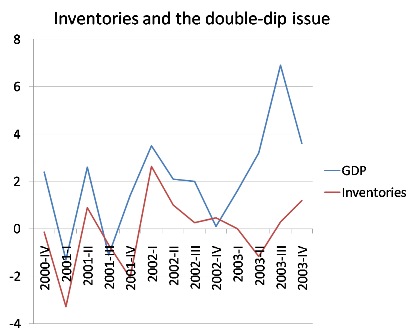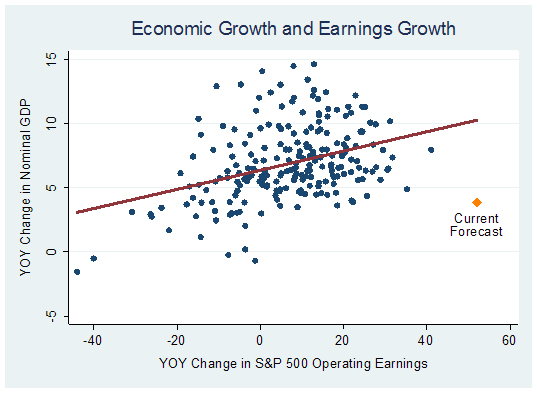Came across
this great paper by James L. Smith on the world oil market. The author addresses the following questions:
(1) Why are oil prices so volatile?
(2) What is OPEC and what does OPEC do?
(3) What is the equilibrium price of oil?
(4) Is “peak oil” a genuine concern?
(5) Why did oil prices spike in 2008, and what role (if any) did speculators play?
Lots a of great infos in there that I quote below.
(1)
Oil price volatility - "What creates high volatility, for both oil and gas, is the inelasticity of demand and supply, plus the substantial lead times required to efficiently alter the stock of fuelconsuming equipment, or to augment the productive capacity of oil and gas fields. Volatility provides incentives for holding large inventories, but since inventories are costly, they cannot fully offset the rigidity of demand and supply.
Empirical estimates of the price elasticity of demand for crude oil vary by place, time, and statistical technique. Estimates of -0.05 (short-run) and -0.35 (long-run) are typical, with several years required to complete the adjustment to a permanent price change.
Income elasticities of demand for crude oil appear to vary significantly by level of income, with near proportional growth in oil demand in many developing countries (EI ≈ 1.00), but much slower growth in the industrialized world (EI ≈ 0.50). It follows that future growth of demand for oil, and therefore the equilibrium price level, hinges on economic growth rates in China, India, etc.
It is more difficult to produce current and reliable estimates of the elasticity of crude oil supply, due in part to confounding effects of resource depletion and technical innovation, but there is consensus that the supply of conventional oil is inelastic. The U.S. Energy Information Administration uses elasticities of 0.02 (short-run) and 0.10 (long-run) for most regions in its international oil supply model.
(2)
OPEC controls 70% of global oil reserves, OPEC’s goal is to set the price by (1) shutting in existing production capacity, and (2) limiting the growth of new capacity. According to Smith OPEC has mostly failed at the former, but succeeded at the latter.
Since the quota system was adopted in 1983, total OPEC production has exceeded the ceiling by 4% on average, but on numerous occasions the excess has run to 15% or more. In general, full compliance has been achieved only during episodes, like the present, when members have not had enough installed capacity to exceed their quotas; i.e., when it has been physically impossible to cheat on their production limits.
OPEC’s crude oil production capacity (33 mmb/d) is virtually unchanged from 1973, although the volume of proved reserves (i.e., known deposits that could have been tapped to expand capacity) doubled over that span. OPEC’s installed capacity is sufficient to extract just 1.5% of its proved reserves per year, which is another way of measuring the low intensity of development.
On the other hand, non-OPEC producers, working mostly in less prolific and more expensive petroleum provinces, have increased their production capacity by 69% since 1973, and installed sufficient facilities to extract 5.6% of their proved reserves each year.
OPEC accounted for only 10% of the petroleum industry’s upstream capital investment during the past decade, although it produced nearly half of global output
OPEC has recently initiated numerous projects to tap their under-developed reserves and finally expand capacity. $40 billion per year is budgeted for this going forward.
In 2007, the five largest international oil companies (the super-majors), who collectively own just 3% of global oil reserves, spent about $75 billion to develop new production capacity. OPEC, with about twenty times the reserves, spends only about half as much in absolute terms.
OPEC restraint is also reflected in the upstream plowback rate: in 2007, the super-majors reinvested 25% of their gross production revenues to expand capacity, whereas OPEC members are investing only about 6% of their net export revenues on such projects.
(3)
Equilibrium Price of Oil: the author uses a simple model with Saudi Arabia as a Stackelberg leader—a producer who anticipates the reaction of consumers and all other (price-taking) producers, and who sets its own output (and price) accordingly. Solving with the then price level of 115 would imply marginal costs for Saudi Arabia of 83$, much high than most estimates of 5 to 15$.
Other model used such as depletion cannot explain the the then high price of oil. Could the reason lie on the supply side and hence the look at
(4)
Peak Oil - The so-called “Hubbert curve” might have been forgotten altogether but for the
fact that Hubbert’s 1956 prediction that U.S. oil production would peak around 1970 was famously borne out. It should also be noted (but usually is not) that the predicted volume of oil to be produced at the peak was 37% too low, and that Hubbert’s predictions regarding coal and natural gas ran badly amiss.
Hubbert predicted that U.S. oil production would peak at 3 billion barrels per year; actual production in 1970 was 4.1 billion barrels. Hubbert predicted that U.S. gas production would peak at 14 trillion cubic feet per year in 1973; actual production was 20 trillion cubic feet in 2007. Hubbert predicted that global coal production will peak in 2150 at about 6.4 billion metric tonnes; actual production reached that level in 2007 and is still growing rapidly.
The crucial fact is that while oil is constantly being “used up” the world is not “running out” of oil. Indeed, Adelman and Watkins (2008) make a strong case that the depletable resource paradigm is not empirically relevant. Since its inception, the oil industry has endeavored to replace every barrel extracted from the earth by investing in new projects to find and develop additional resources, so far with great success. Despite our having consumed almost 700 billion barrels of crude oil during the past quartercentury, the volume of remaining proved reserves available to support future production has doubled since 1980 and now stands at an all-time high. The stock of proved reserves has grown even faster than production, which means that the “reserves to production ratio” has grown, and that we now extract a smaller fraction of remaining reserves each year than previously. The implication is undeniable: increasing physical scarcity, the currency of the peak oil club, can not have triggered oil’s recent ascent.
(5)
Speculators - Relative to the size of the world oil market, hedge funds and the “super-major” oil companies are indeed small fry. To succeed at price fixing, one of two things would be required: (1) accumulating large private inventories that are diverted from the commercial supply chain; or (2) shutting in a significant portion of global oil production. Neither phenomenon has been observed."










